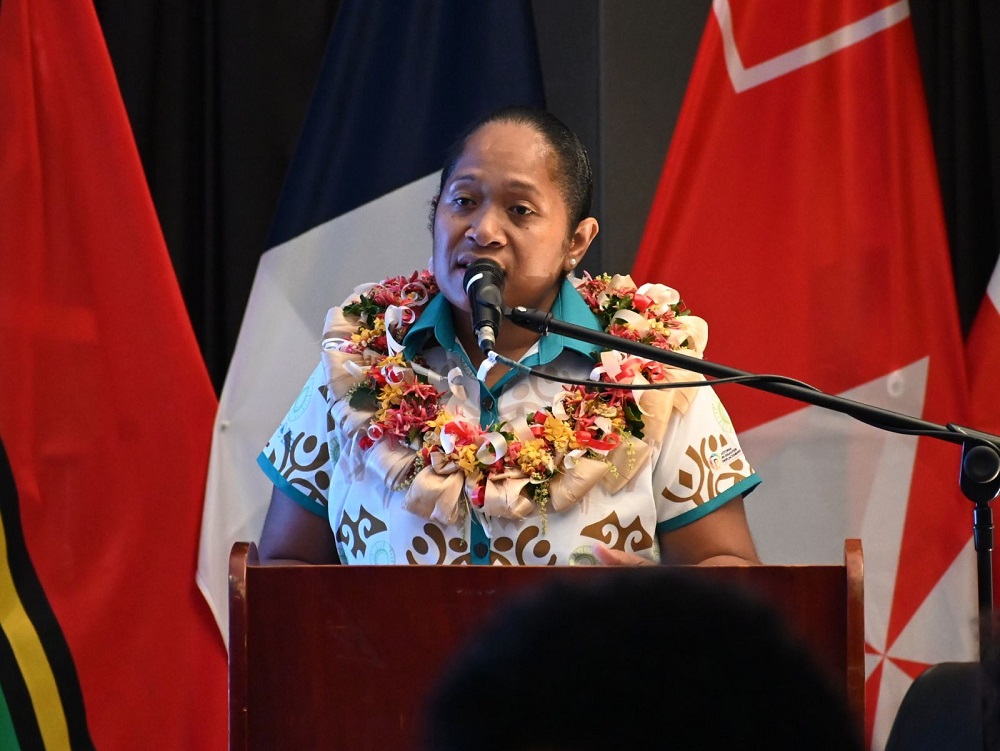Opening Remarks by Mrs. Sala Daunabuna, Fiji Permanent Secretary, Rural & Maritime Development & Disaster Management at the Occasion of the
Pacific Regional Consultation, Fiji, December 2022
European Union Ambassador for the Pacific
Envoy of the Chair of Platform on Disaster Displacement
Excellencies
Invited Guests,
Ladies & Gentlemen
Ni Sa Bula Vinaka!
I welcome you all this morning, and I welcome those who have travelled from the region to attend today’s workshop and I extend a special welcome to our colleagues who have travelled far from cold Geneva, to get a dose of sunshine in the Pacific.
I am very pleased to join you today at this regional dialogue and to be part of this discussion examining the various approaches and learnings about human mobility in the context of disasters and the adverse effects of climate change in the Pacific.
The 2022 IPCC Sixth Assessment Report warns that the world is set to reach the 1.5ºC level within the next two decades and that there are limits to adaptation because of our inability to avoid an intolerable amount of risk. These anticipated limits arise because of future global climate variability.
The Pacific is “living” the climate crisis on a daily basis. Disasters have tested the resilience of Pacific communities, in responding to the impacts of climate change such as more frequent and longer droughts, increased severity of tropical cyclones, flooding, coastal erosion, and loss of arable land, are forcing us to leave our homes.
Preventing and responding to disaster displacement, will require tailored approaches to confront specific challenges that are compounded by impacts of poverty and inequality, the climate and biodiversity crisis, and the Covid-19 pandemic.
In saying this, I wish to emphasise the importance of collaboration to garner greater coherence around our responses to disaster displacement. Discussions at the UNFCCC, the review of the Sendai Framework, Nansen Initiative, the Global Compact on Migration (GCM), the Platform for Disaster Displacement, and the Sustainable Development Agenda, must connect with our national and regional plans.
27% of the Fijian population live within 1 kilometre of the coastline, while 76% within just 5 kilometres. Most of these communities are already moving out of the way of the rising seas that have inundated their homes, ruined their farming land with saltwater, flooded their ancestral burial grounds and left them vulnerable to landslides.
Internal displacement and planned relocation demands:
(i) greater resource mobilization;
(ii) an improved enabling environment through targeted legislation and policies; and
(iii) strong institutional and governance arrangements.
The 2050 Strategy for a Blue Pacific Continent outlines our collective vision to addressing the challenges of climate change and disasters whilst acknowledging our vulnerabilities. The region is also finalizing its first Regional Climate Mobility Framework which considers displacement amongst other key issues.
At the inaugural Pacific Disaster Ministers Meeting, in Nadi we committed to strengthening efforts at the regional, national and local level in the Pacific to collate, assess and analyse data to inform evidence based policy development on resilient development alternatives and to address the root causes of vulnerability and risk.
These are just commitments, unless they are put into ACTION.
In saying this, I wish to acknowledge the work of the Platform for Disaster Displacement (PDD) Steering Group, which has amplified the voice of the Pacific at global platforms including UNFCCC COP 26, Global Platform in Bali and the International Migration Review Forum (IMRF) in New York. Ensuring that the concerns of the Pacific and best practices are shared with other members states and development partners is important in leveraging the work of countries in this space.
I happy to note that the Norwegian Agency for Development Cooperation has included the Pacific in a pilot project to identify and advance context-specific and effective efforts to avert, minimize and address losses and damages related to displacement and other forms of population movements taking place in the context of climate change.
As the most recent outgoing chair of the PDD Steering Committee, Fiji acknowledges the support and commitment of the PDD Steering Committee and its 20 member states and the European Union.
On behalf of the Fijian Government, I welcome the European Union as the incoming chair of the PDD, and reiterate our assurance to support the EUs chairmanship of the PDD for its chairman tenure.
I am pleased to also have the Ambassador of the European here today representing the chair. As French Ambassador to the Pacific, he extended the invitation that Fiji be the Vice Chairman of PDD under the French chairmanship in 2019. Today, he is here again to receive the chairmanship as the Head of the EU delegation for the Pacific from Fiji.
I am informed that we have a few regional projects funded by partners like the European Union and the Government of New Zealand which has started to grow the conversation on human mobility opportunities in the region.
This workshop brings together a community of practice across the region to discuss country approaches to address human mobility in the context of climate change with a view of promoting knowledge sharing and learning.
It is important that we share experiences on what has worked and what are the gaps in our displacement, mobility and protection agenda’s. Understanding our challenges and the underlying dynamics on why some approaches have not worked is important in building future robust regional and national frameworks to identify human mobility pathways as viable climate adaptation strategy.
With those few words, it gives me great pleasure to open this regional PDD workshop and to welcome the Ambassador of the European Union as the incoming chairman of the Platform on Disaster Displacement.
I wish you well in your discussions over the next two days.
Vinaka Vakalevu and Thank You





